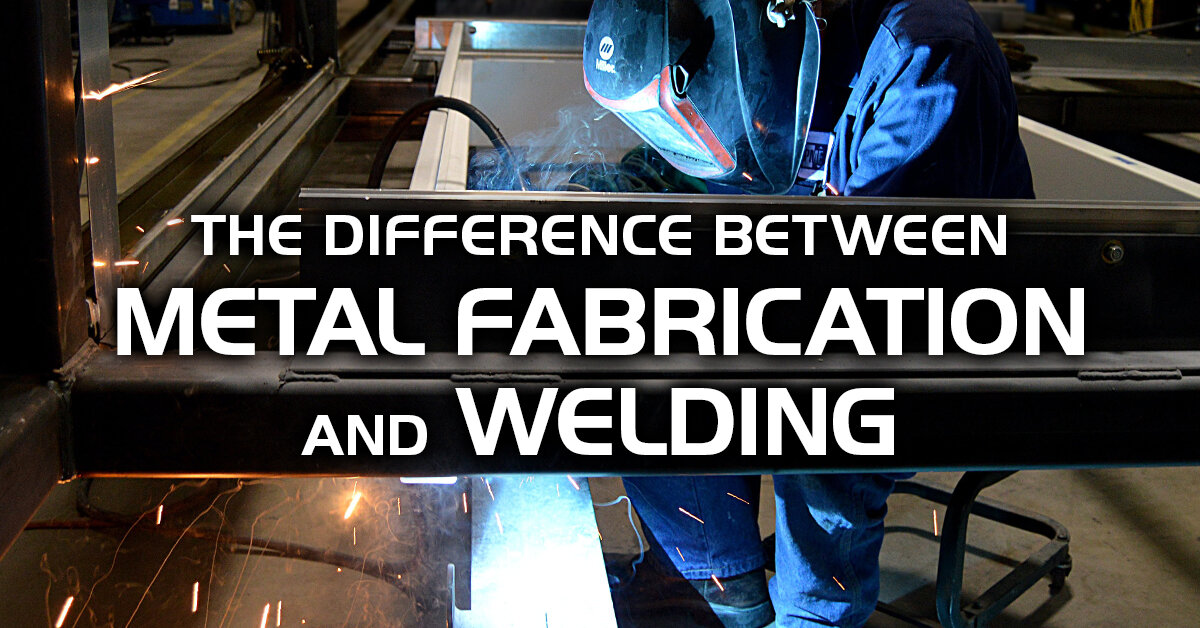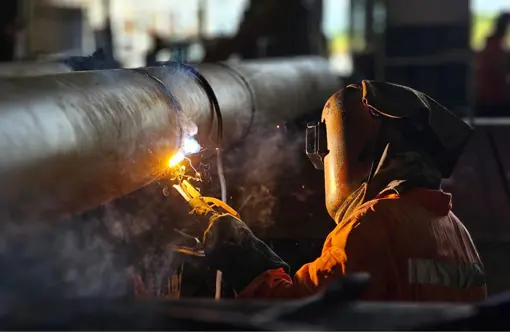Common Welding Repair Work Issues and Just How to Address Them Successfully
Welding repair work often run into a variety of problems that can threaten the honesty of the last item. Typical issues include inadequate infiltration, porosity, and imbalance, among others. Each flaw offers one-of-a-kind challenges that call for particular approaches for resolution. Recognizing these issues is vital for welders aiming to enhance their skills and results. This discussion will certainly explore these usual welding repair work concerns and reliable methods to address them.
Inadequate Penetration
Insufficient infiltration occurs when the weld metal stops working to totally fuse with the base product, causing weak joints and prospective structural failures. This concern frequently comes from insufficient warm input, incorrect electrode angle, or inappropriate welding rate. Welders may encounter poor penetration because of a mistake of the essential parameters for a specific product density or type. Additionally, contamination on the base material's surface area can prevent efficient bonding, worsening the issue. To attend to inadequate penetration, welders must ensure appropriate setups on their equipment and keep a clean job surface. Regular evaluation of welds is suggested to recognize any type of shortages early, enabling timely improvements and the avoidance of endangered structural honesty in welded settings up.
Porosity
Porosity is an usual problem in bonded joints that shows up as tiny gas bubbles entraped within the weld metal. This defect can compromise the integrity of the weld, causing lowered strength and potential failure under tension. Welding. Porosity generally arises from contamination, wetness, or incorrect welding methods, which allow gases to get away right into the molten weld pool. To attend to porosity, welders need to guarantee correct surface prep work, preserve a tidy working environment, and make use of suitable welding criteria. In addition, selecting the right filler material and securing gas can reduce gas entrapment. Normal examination and testing of welds can assist determine porosity early, guaranteeing timely rehabilitative actions are taken, thus maintaining the top quality and integrity of the bonded structure
Imbalance
Misalignment in welding can develop from different variables, including improper arrangement and thermal development. Comprehending the origin is necessary for reliable resolution. Several improvement strategies are readily available to realign elements and guarantee architectural integrity.
Reasons for Imbalance
Welding imbalance often comes from a selection of underlying concerns that can endanger structural stability. One primary cause is incorrect fit-up of elements before welding, which can lead to gaps and irregular surfaces. Variations in thermal growth throughout the welding process can also lead to distortion, particularly if the products being joined have various coefficients of development. Additionally, insufficient securing and fixturing may fail to hold components safely in location, causing activity throughout welding. Badly maintained tools, including welding machines and tools, may present inconsistencies in the weld bead, more adding to misalignment. Ultimately, driver error, stemming from not enough training or experience, can also play a substantial role in developing misaligned welds.
Modification Methods Offered
Attending to imbalance effectively requires a combination of restorative techniques customized to the certain issues at hand. One typical technique is using fixtures or jigs to hold elements in the right position throughout welding, making certain regular placement. In addition, preheating the materials can assist reduce distortion and enhance fit-up. For considerable misalignment, mechanical adjustment methods, such as utilizing hydraulic jacks or clamps, can be employed to remedy the setting before welding. Post-weld heat therapy may likewise be necessary to alleviate anxieties brought on by imbalance. Careful assessment and modification during the setup stage can prevent misalignment problems from ending up being considerable issues, advertising a smoother welding process and improving overall structural honesty.
Distortion
Distortion is an usual difficulty in welding that can develop from numerous elements, consisting of unequal cooling and heating. Recognizing the reasons for distortion is crucial for applying reliable avoidance strategies. Resolving this issue not only boosts structural honesty however additionally boosts the total top quality of the weld.
Sources of Distortion
When based on the intense warmth of welding, materials frequently go through changes that can result in distortion. This sensation primarily occurs from thermal development and tightening during the welding process. As the weld area heats up, the product increases; upon air conditioning, it acquires, which can create inner stresses. In enhancement, uneven home heating across a work surface can worsen these stresses, leading to bending or bending. The sort of product additionally plays a significant function; metals with differing thermal conductivity and coefficients of growth might react differently, resulting in unpredictable distortions. In addition, bad joint layout and insufficient fixturing can add to imbalance during welding, enhancing the possibility of distortion. Comprehending these reasons is vital for reliable welding fixing and prevention methods.
Avoidance Techniques
Effective avoidance methods for distortion during welding concentrate on controlling warmth input and ensuring micro welding appropriate joint layout. Preserving a consistent warm input assists to minimize thermal development and tightening, which can bring about distortion. Using strategies such as preheating the workpiece can also minimize the temperature level gradient, promoting consistent home heating. Furthermore, selecting appropriate joint designs, such as T-joints or lap joints, can enhance security and decrease stress and anxiety concentrations. Executing proper fixturing to safeguard the work surfaces in position further help in maintaining placement during the welding procedure. Ultimately, staggered welding series can distribute heat a lot more equally, avoiding local distortion. By using these methods, welders can substantially reduce the chance of distortion and improve the overall top quality of their welds.
Splitting
Fracturing is an usual problem run into in welding fixings, typically resulting from numerous variables such as inappropriate air conditioning rates, product selection, or insufficient joint prep work. The incident of fractures can greatly endanger the honesty of the weld, causing potential failings throughout procedure. To resolve this issue, welders must initially assess the origin creates, making sure that materials work and appropriately chosen for the certain application. Furthermore, managing the cooling rate during the welding process is important; rapid cooling can cause anxiety and cause cracking. Appropriate joint style and preparation also add to reducing the danger. Implementing these strategies can enhance weld quality and resilience, ultimately minimizing the chance of fracturing in ended up weldments.

Insufficient Combination
A substantial problem in welding repair work is insufficient blend, which happens when the weld steel does not appropriately bond with the base product or previous weld passes - Montana Mobile Welding and Repair Belgrade. This issue can result in weaknesses in the joint, potentially jeopardizing the integrity of the bonded framework. Aspects adding to incomplete combination consist of insufficient warm input, incorrect welding technique, and contamination of the surface areas being signed up with. To address this problem successfully, welders ought to guarantee proper pre-weld cleansing and surface prep work, along with adjust their welding specifications to accomplish appropriate penetration and combination. Routine assessment during the welding procedure can likewise assist determine insufficient combination early, permitting i loved this prompt corrective measures to improve the total quality of the weld
Overheating
While welding repair work can boost architectural honesty, overheating presents a significant challenge that can result in product deterioration. Extreme heat during welding can alter the mechanical buildings of steels, resulting in minimized strength, enhanced brittleness, and bending. This sensation is particularly vital in high-stress applications where architectural integrity is vital. Identifying getting too hot can include visual evaluations for discoloration or distortion, along with keeping an eye on temperature throughout the welding process. To reduce the threats related to overheating, welders need to use suitable techniques, such as managing heat input, readjusting traveling speed, and using suitable filler materials. In addition, applying pre- and post-weld warmth therapies can assist bring back product properties and improve the general high quality of the repair service, guaranteeing long-lasting performance and security.
Frequently Asked Concerns
What Are the Usual Indicators of a Welding Problem?

How Can I Check My Welds for Top quality?
To evaluate welds for quality, one can utilize aesthetic examinations, ultrasonic screening, and radiographic techniques. Each strategy assures architectural stability, identifies defects, and validates adherence to specified requirements, ultimately improving the dependability of the bonded joints.
What Safety and security Preventative Measures Should I Take While Welding?
When welding, one ought to focus on safety and security by using ideal personal protective tools, guaranteeing proper air flow, protecting combustible products away, maintaining a tidy office, and understanding surroundings to stop injuries and accidents.
Can I Repair a Weld Without Redoing the Entire Joint?
Fixing a weld without renovating the whole joint is possible, relying on the damage (Montana Mobile Welding and Repair Belgrade). Techniques such as grinding, including filler product, or using a welding process can successfully address certain problems while maintaining the surrounding structure
What Tools Are Essential for Effective Welding Fixes?
Crucial devices for efficient welding fixings consist of a welding machine, cable brush, grinder, protective equipment, clamps, and filler products. Each device plays a vital role in guaranteeing quality and security throughout the repair work process. Porosity typically emerges from contamination, dampness, or improper welding strategies, which permit gases to leave into the liquified weld pool. Improperly kept devices, consisting of welding devices and tools, may introduce inconsistencies in the weld grain, further contributing to misalignment. When subjected to the intense warm of imp source welding, materials often undergo changes that can lead to distortion. Breaking is a typical concern run into in welding repair work, usually resulting from various elements such as inappropriate air conditioning rates, material choice, or inadequate joint preparation. A considerable problem in welding repairs is incomplete blend, which happens when the weld metal does not adequately bond with the base material or previous weld passes.